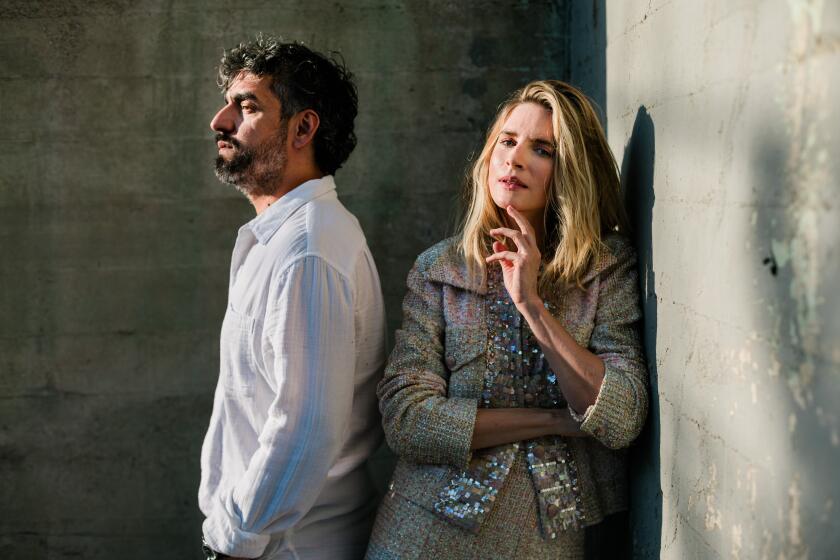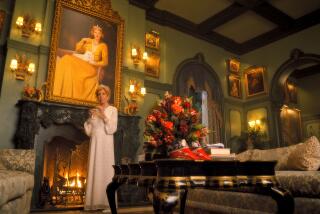How the lavish hotel in ‘Murder at the End of the World’ evolves into a futuristic fortress
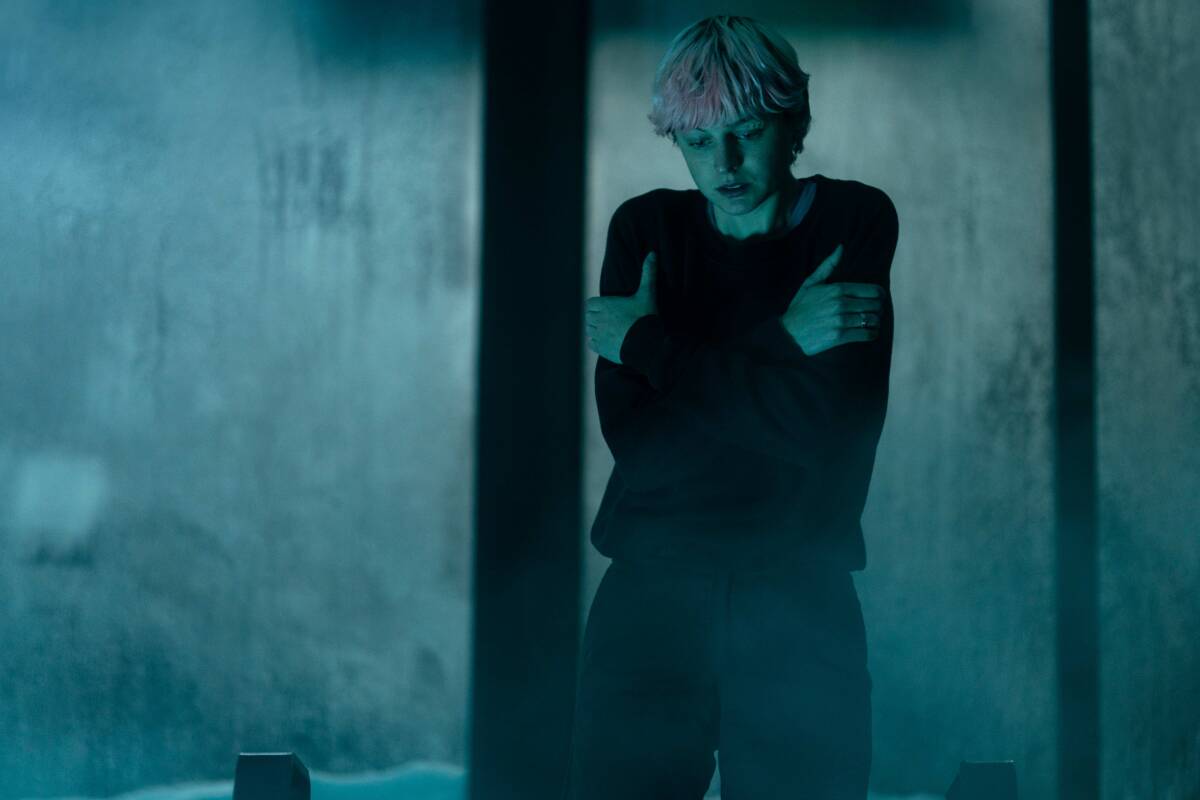
- Share via
“A Murder at the End of the World” is a complexly constructed series, hopping between two timelines and uncovering several mysteries. Its sets, helmed by production designer Alex DiGerlando, were equally complicated.
The FX on Hulu series follows author, hacker and amateur investigator Darby Hart (Emma Corrin) to a remote hotel in Iceland, where tech billionaire Andy Ronson (Clive Owen) has gathered a group of elite thinkers to discuss the impacts of the climate crisis. The retreat turns deadly when Darby’s old flame and fellow sleuth Bill Farrah (Harris Dickinson) is murdered. She sets out to find the killer as dangerous weather closes in, traversing the frozen landscape and discovering hidden secrets of the hotel in the process.
Creators Brit Marling and Zal Batmanglij conceived the hotel, constructed by Andy and his wife Lee (Marling) to survive the end of the world, early on when writing the series. Marling explains there were “a lot of written constraints” to the structure.
Brit Marling and Zal Batmanglij, the creators of FX’s “A Murder at the End of the World,” wanted to create a detective who was more evolved than what we typically see in the whodunit genre.
“There were things that it had to be able to do and achieve as it moves from being a luxury, boutique hotel to feeling more like a fortress to then feeling more like a prison,” Marling says. “It had to be able to cycle through all those different identities.”
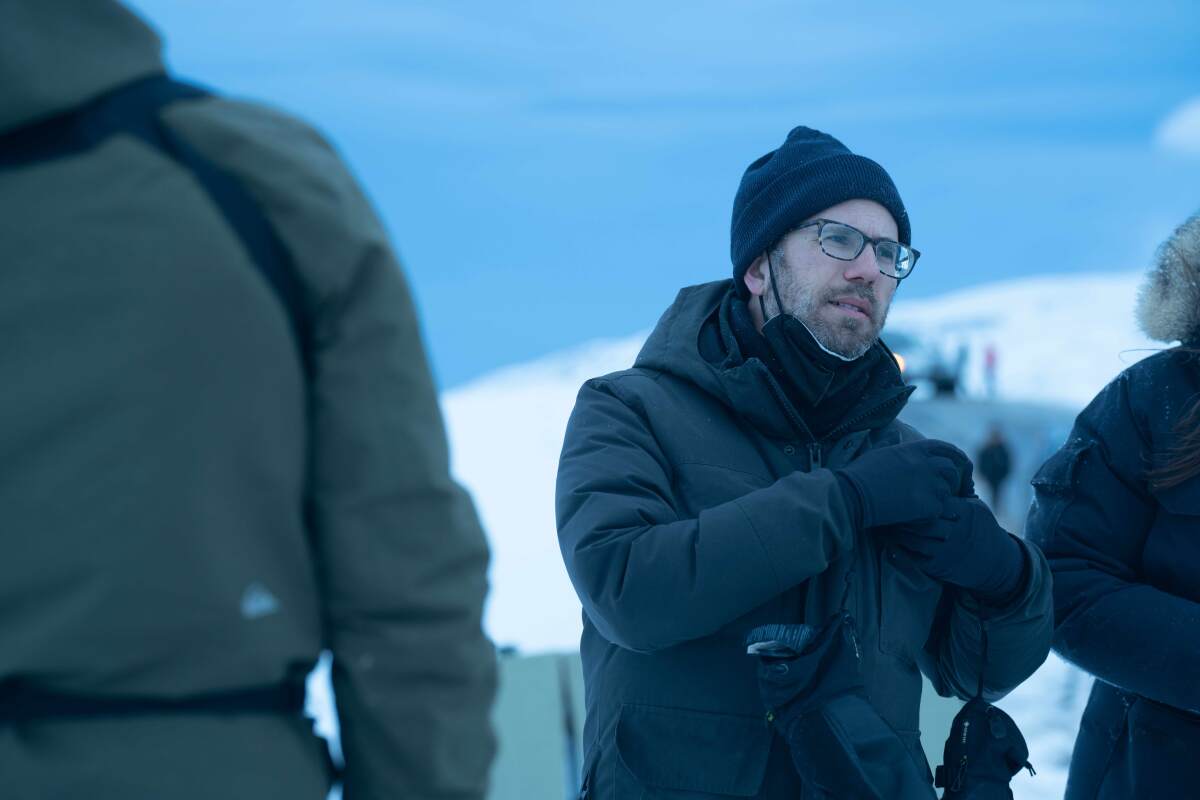
Originally, the story was set in Norway, but FX suggested they look at Iceland, a popular shooting location due to its tax incentives (HBO’s “True Detective: North Country” was also shot there last year). Marling, Batmanglij and DiGerlando were immediately intrigued by the Icelandic landscape during a scouting trip.
“It felt like the beginning of the Earth,” Batmanglij says. “We realized that Andy and Lee’s hotel could be fully off the grid. This thing that looks like a luxury hotel on the surface is actually this palatial bunker. A safe room in a house [is] a thing of the past. The new version is a whole place where you could live for years. That became a really exciting thing to put on screen.”
Constructing the circular hotel
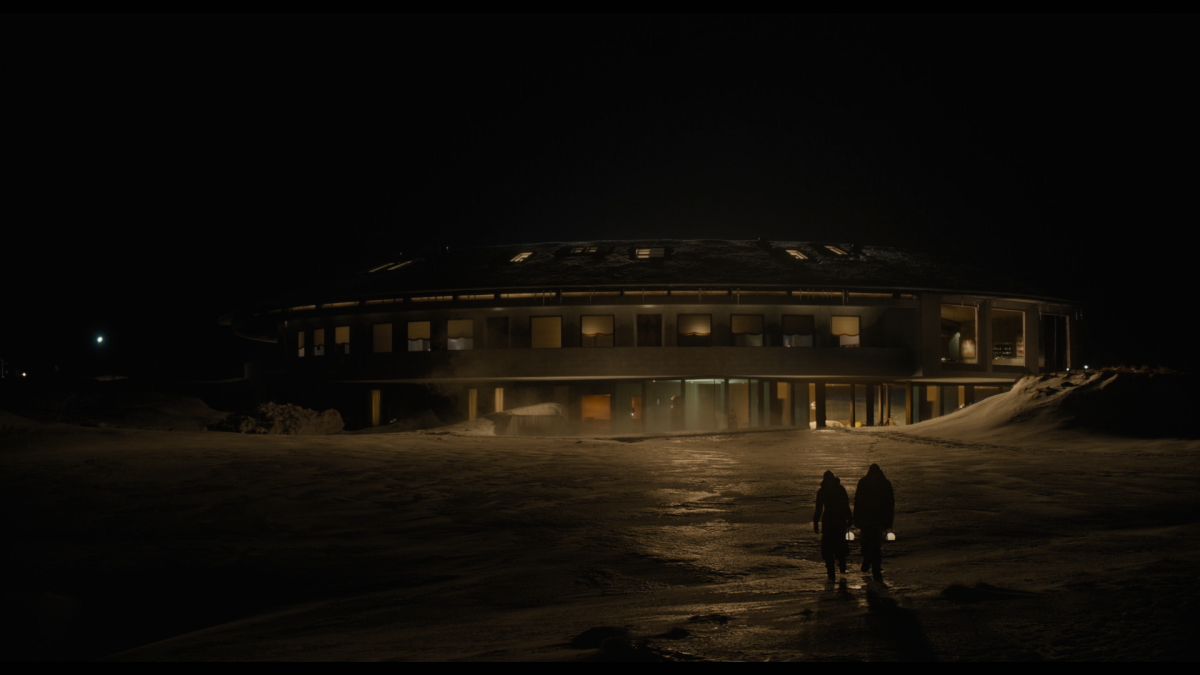
It quickly became clear that an existing building couldn’t meet all the demands of the story, so the team decided to construct Andy’s retreat from scratch. Marling and Batmanglij wanted a circular hotel where all of the rooms looked outward.
“It felt like the circle in the snow was such an important image,” Marling says. “In part because of how much the story wanted to talk about time and the present sending you back into the past. As you remember the past, you rewrite it and then that carries you into the present again differently. We thought of the hotel as the hands of time.”
DiGerlando took inspiration from the Chinese walled villages known as Hakka and English castles, as well as Scandinavian and Japanese design.
“We talked a lot about feudalism and Andy being like a king,” DiGerlando says. “The hotel takes the place of the Victorian manor house of an Agatha Christie novel.”
1
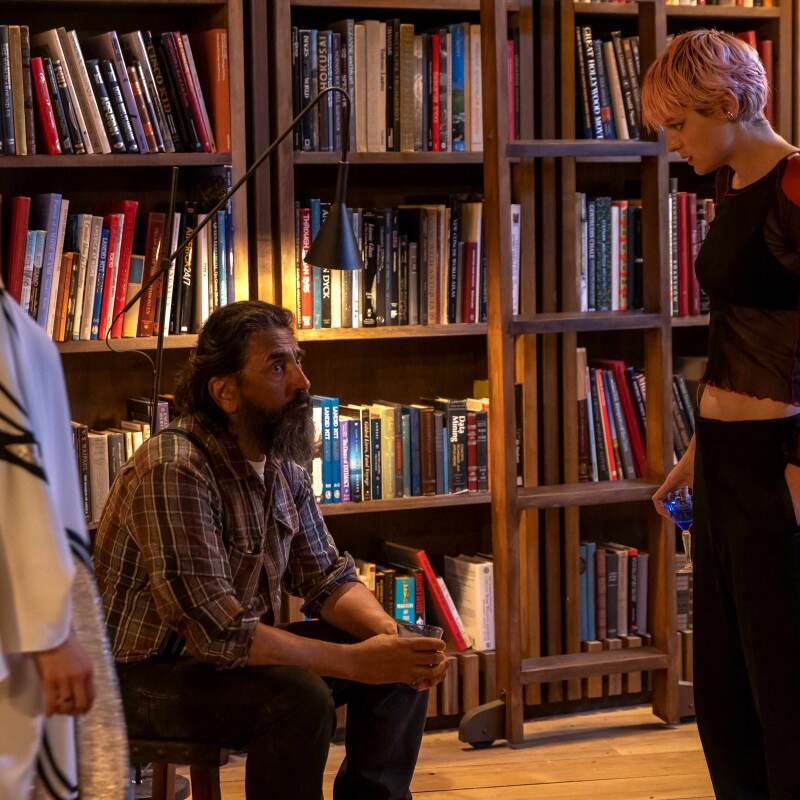
2

1. Set designer Alex DiGerlando says that halfway through production they “ripped out the bookshelves in the library and dressed it as the dining room and we renumbered the rooms.” From left, Joan Chen as Lu Mei, Javed Khan as Rohan and Emma Corrin as Darby.
(Eric Liebowitz/FX) 2. Darby (Emma Corrin) underwater in the pool in “A Murder at the End of the World.” (Lilja Jons/FX)
What you see on screen is a combination of a detailed set built on a New Jersey soundstage over three months, actual locations in Iceland and CGI. The hotel entrance, where Darby arrives in Episode 1, was filmed at Vök Baths in Fellabær, Iceland, while the swimming pool was shot at Eleven Deplar Farm, a high-end hotel in Olafsfjördur.
“It is a real Frankenstein,” DiGerlando says. “And we couldn’t afford to build or fit on our soundstages the full circle, so we built [the hotel] as a semicircle. Halfway through, we ripped out the bookshelves in the library and dressed it as the dining room and we re-numbered the rooms. It was really tricky for the actors and the directors.”
Designing the interiors
1
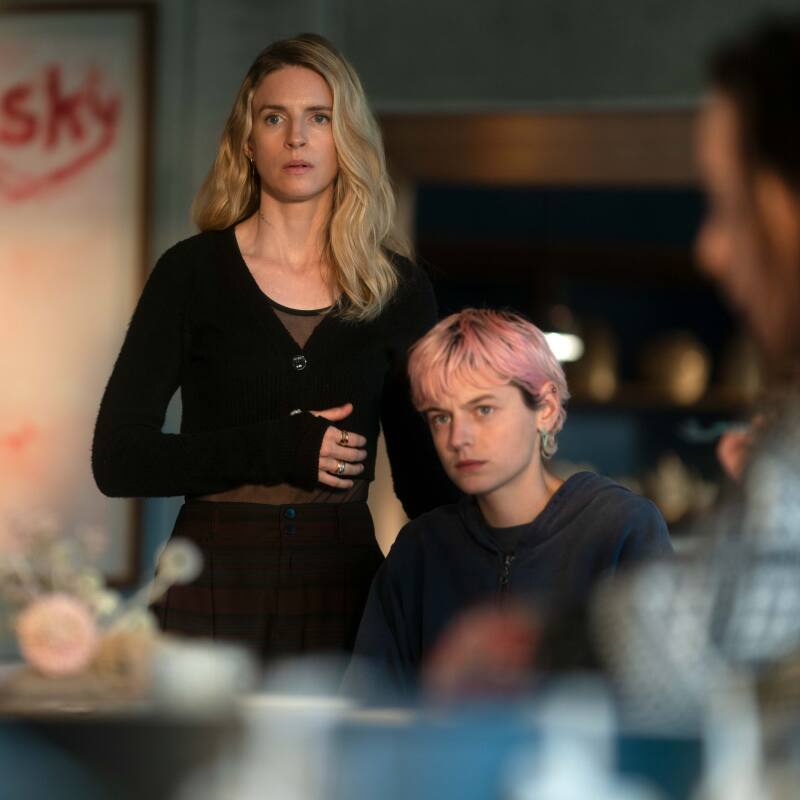
2
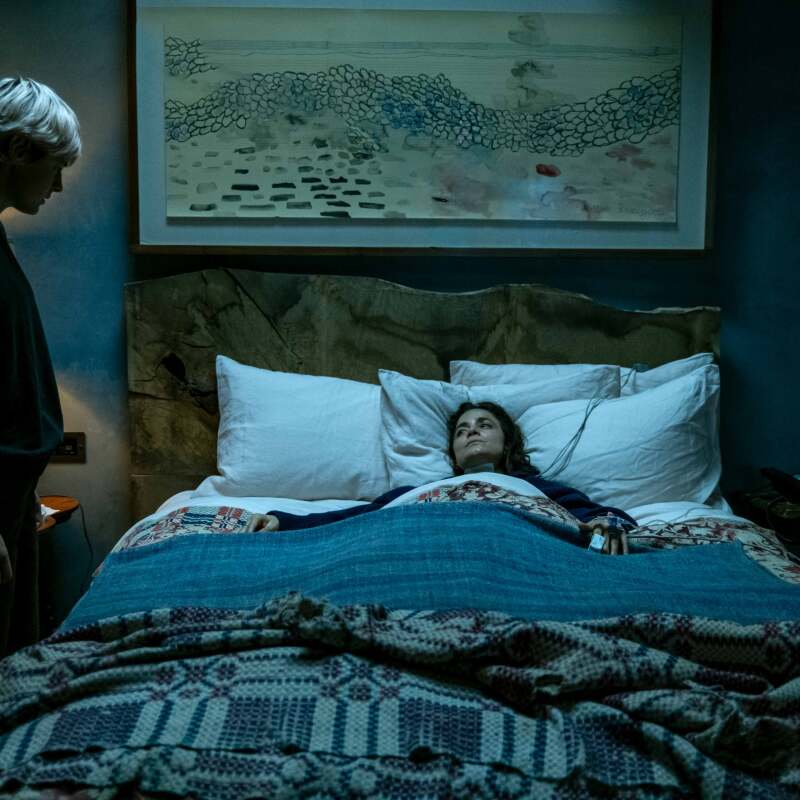
1. Brit Marling as Lee, left, and Emma Corrin as Darby Hart. In the background, Louise Bourgeois’ “Red Sky” hangs on the wall. (Chris Saunders/FX) 2. Darby (Emma Corrin), left, with Sian (Alice Braga). A Bourgeois artwork hangs above the bed. (Chris Saunders/FX)
Marling created a reference document to help guide the “tightly controlled” color palette of the set, which included a lot of blue. The team looked to Japanese wabi-sabi for the hotel interiors and used reclaimed wood for many of the finishes. Batmanglij also suggested using Louise Bourgeois paintings throughout the hotel.
“Alex got really mad at me when I asked for these because he was like, ‘We’re two weeks away from shooting, what are you talking about?’” Batmanglij says. “A week later, they were all there, framed and beautiful. But unfortunately the estate makes you photograph or film destroying them. All I wanted to do was take those home.”
While viewers might expect the hotel to be more futuristic, the creators pushed away from the traditional tech guy aesthetic.
“There’s become this idea on screen that a space always has to feel like the inside of an Apple store, where everything is brushed concrete and steel and glass and right angles,” Marling says. “Those spaces feel really cold and clinical. If you’re Andy and Lee Ronson and you have all the money in the world and you’re designing a space that you might be spending the rest of your life living in, what do you actually want?”
Marling adds that to her, a space where technology is unassuming feels more like the future. There are no screens in the entire hotel. When Ray (Edoardo Ballerini), Andy’s AI, appears, he’s projected on a plaster wall.
“As technology becomes more developed, the things that will be more precious are the more limited resources, like watercolor Louise Bourgeois painting and old Persian carpets,” Marling says. “Having the technology hidden within that space just felt like a more fresh take on it.”
That aesthetic is especially apparent in Andy and Lee’s underground living quarters, which are revealed in the fifth episode. DiGerlando drew from grand medieval castles and European churches. The sconces on the walls emulate torches and the walls are richly textured. Sunlight arrives via a series of mirrors despite the depth of the bunker.
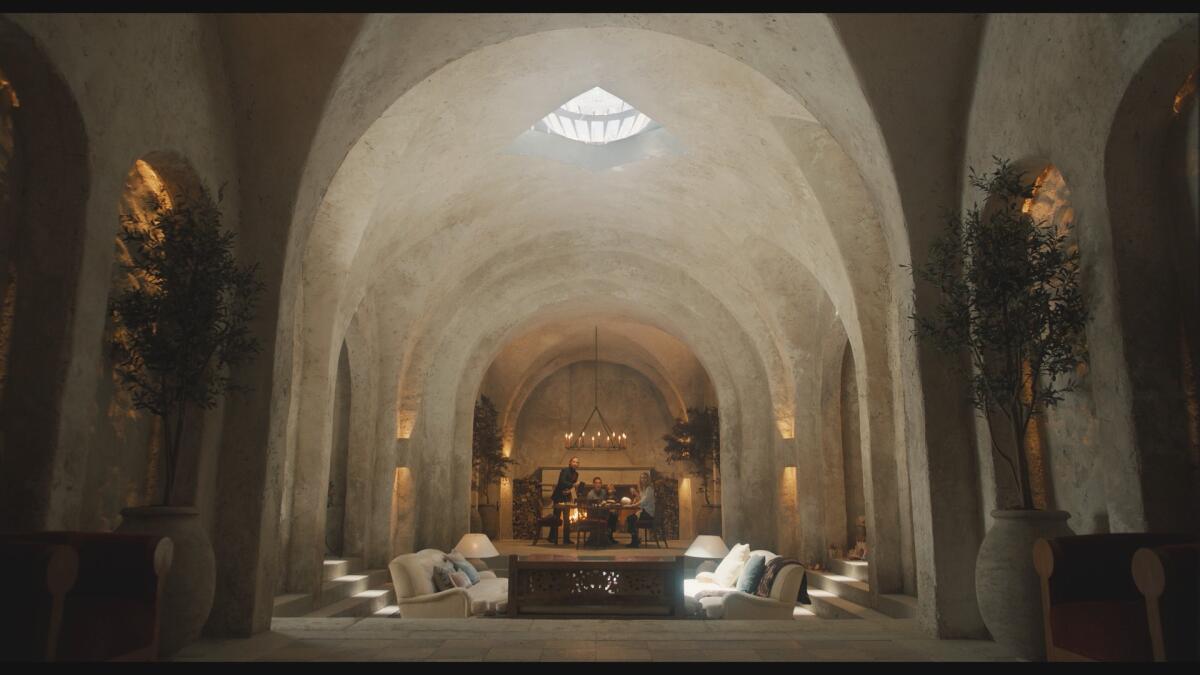
“I don’t want to make a comment on taste, but when you make a fictional thing sometimes taste has to be more elevated than what the real counterpart would be,” DiGerlando says. “We were looking for clues of what one could do if resources weren’t an issue.”
“But even with all that wow factor — the fires, the art — there’s no love in these spaces,” Batmanglij adds. “You realize money is not the answer. You can ship a whole church to Iceland and that’s not going to fill it with love. The relationships between people are what matter.”
Marling and Batmanglij previously worked with DiGerlando on “The OA” and “The East.” Marling says she writes “NAR” in her script when acting on his sets.
“It’s my abbreviation for ‘no acting required,’” she says. “When you’re in the space, you can draw so much from how much detail and love and care Alex has put into the storytelling. All you have to do is just absorb that and be present. I really felt that in terms of the Ronson underground suite.”
Embracing the elements
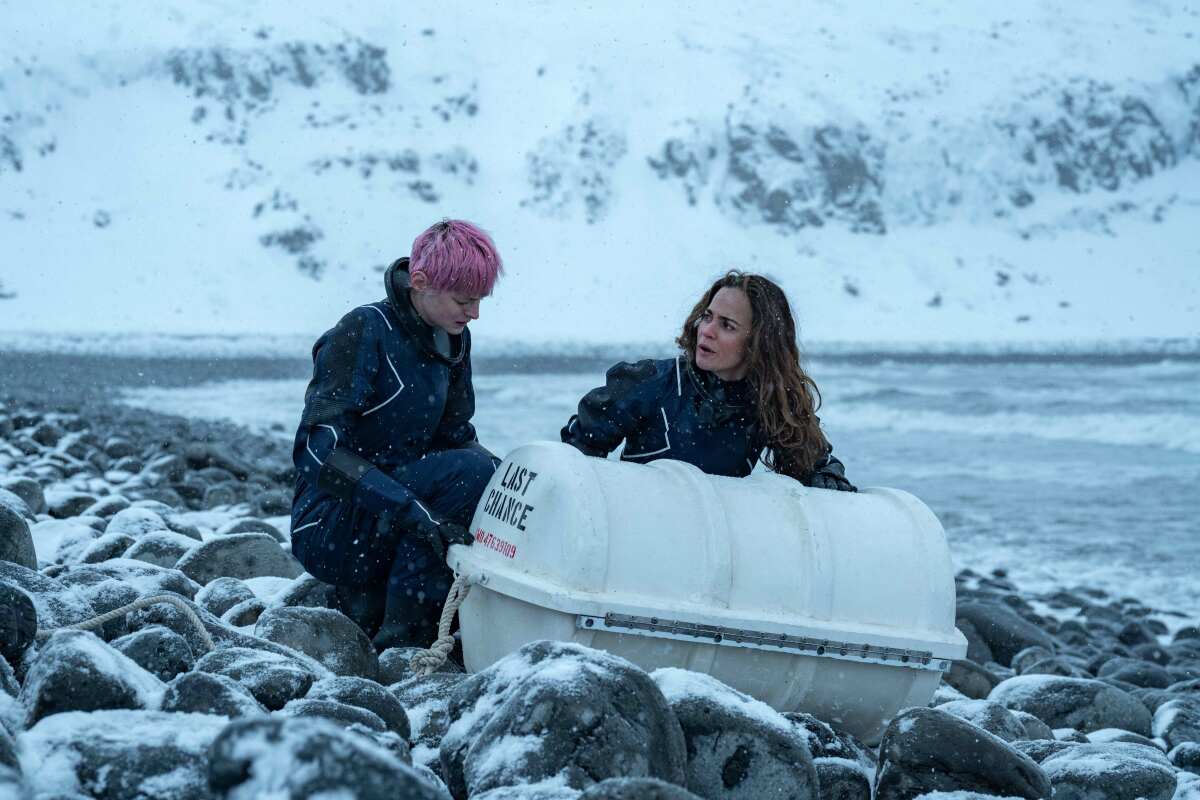
The show’s production went to Iceland in the middle of winter and some of the locations were especially challenging. Hedinsfjordur, located on the Arctic Sea, served as the beach where Darby finds a Zodiac raft, a type of inflatable boat. To get there, the crew had to take snowmobiles across a frozen lake.
“This was the first day of shooting and, of course, in the very first minutes of the very first day a giant sneak attack wave came and splashed the whole crew in Arctic water,” DiGerlando says. “Brit got hypothermia.”
In Episode 3, Darby trails a masked suspect out of the hotel in the dark of night into a canyon and revisits it in Episode 4, looking for clues. The team used Studlagil Canyon, a spot that has recently become popular with tourists thanks to Instagram. They also shot exterior scenes in Fjardarheidi, a mountain pass, and outside the village of Seydisfjordur in eastern Iceland.
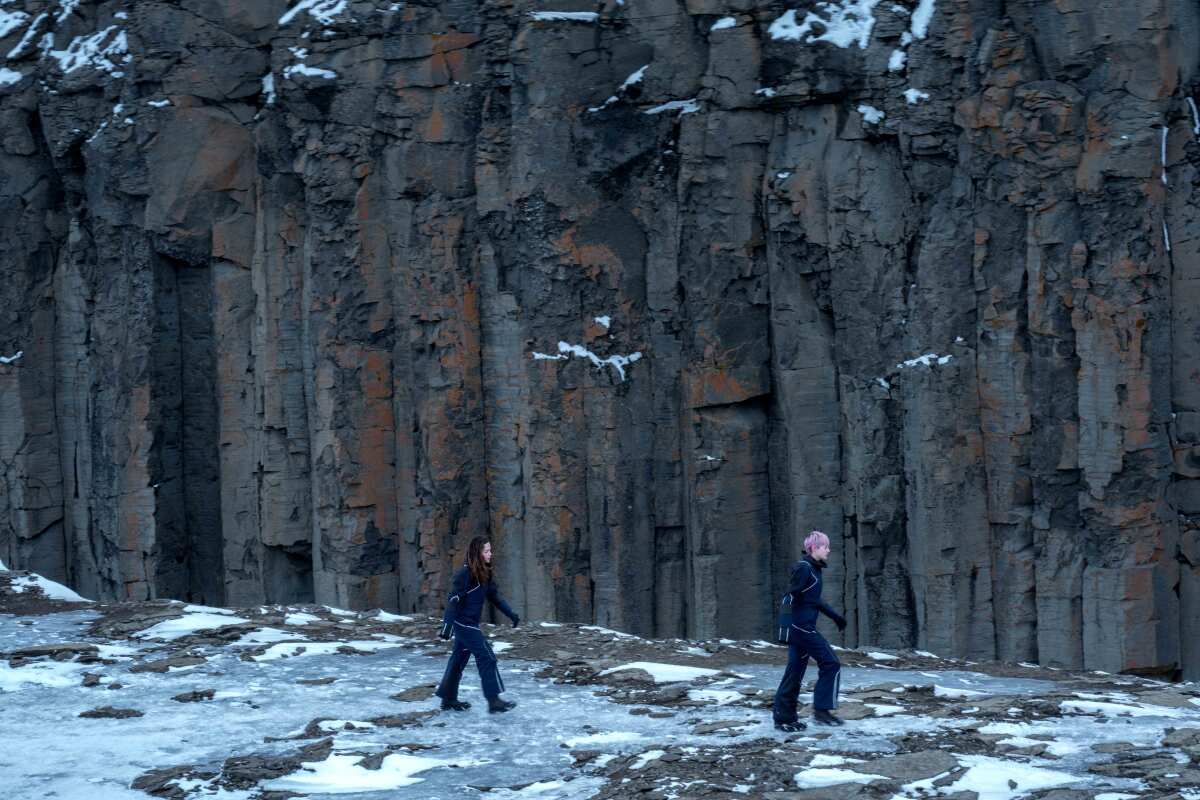
Due to time constraints and an outbreak of COVID on set, however, several scenes had to be continued back in New Jersey.
“We ended up building part of that basalt canyon back on the stage in New Jersey,” DiGerlando says. “We had to build the Deplar Farm pool, but ours was deeper. There were a lot of sleights of hands to make it happen, but hopefully people think it’s a real place and want to go there.”
While the hotel’s interiors were shot safely away from the cold and snow, visual trickery was used to immerse the building into the landscape. A combination of blue and green screens were set up outside the windows along with practical elements like snow drifts. Rain and snow machines brought texture to the shots, with precipitation hitting the glass. DiGerlando and the visual effects team even considered the orientation of the hotel with the sun.
“If you can create in the beginning a lot of weight in real spaces, then when you do the merger [with sets and VFX] you suddenly believe,” Marling says. “And when you cut to an exterior wide shot of the hotel, which is a CGI hotel in a real valley, it feels true. Yes, the hotel is beautiful. But the story has to work and unfold correctly in those spaces and you have to believe everything is real at the same time.”
More to Read
The complete guide to home viewing
Get Screen Gab for everything about the TV shows and streaming movies everyone’s talking about.
You may occasionally receive promotional content from the Los Angeles Times.
